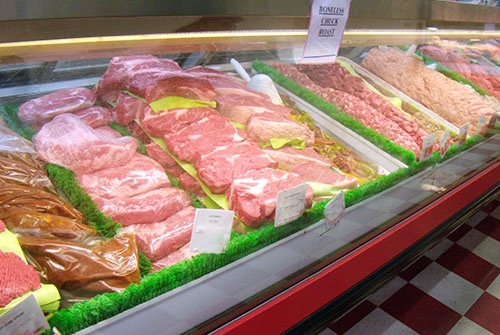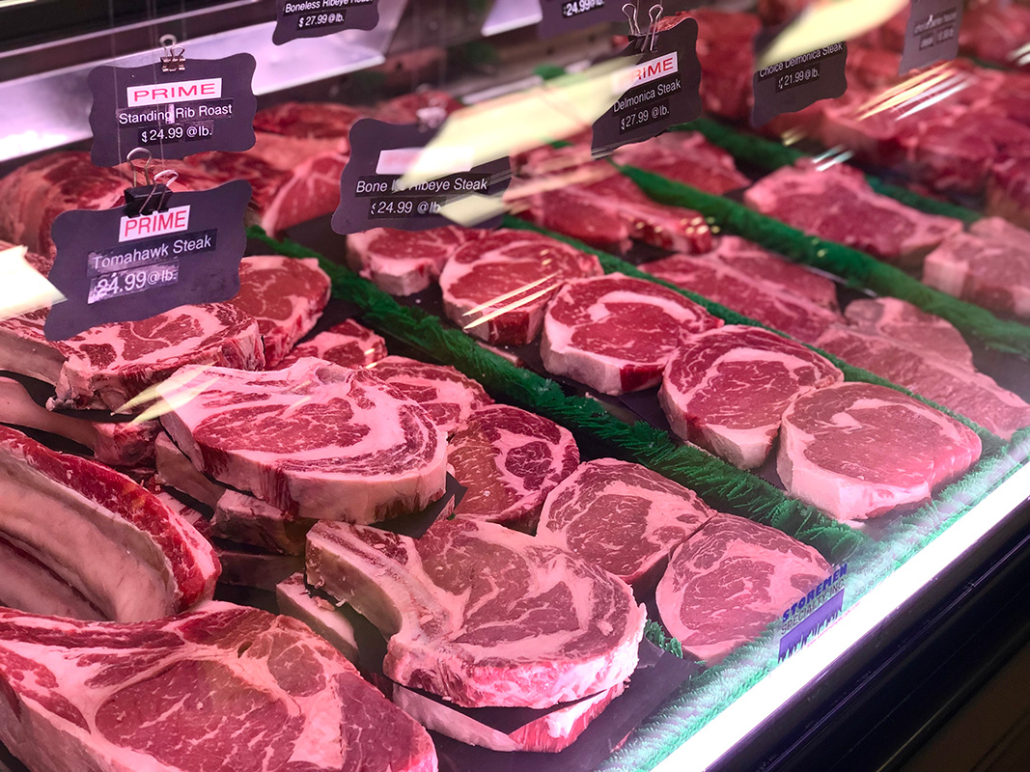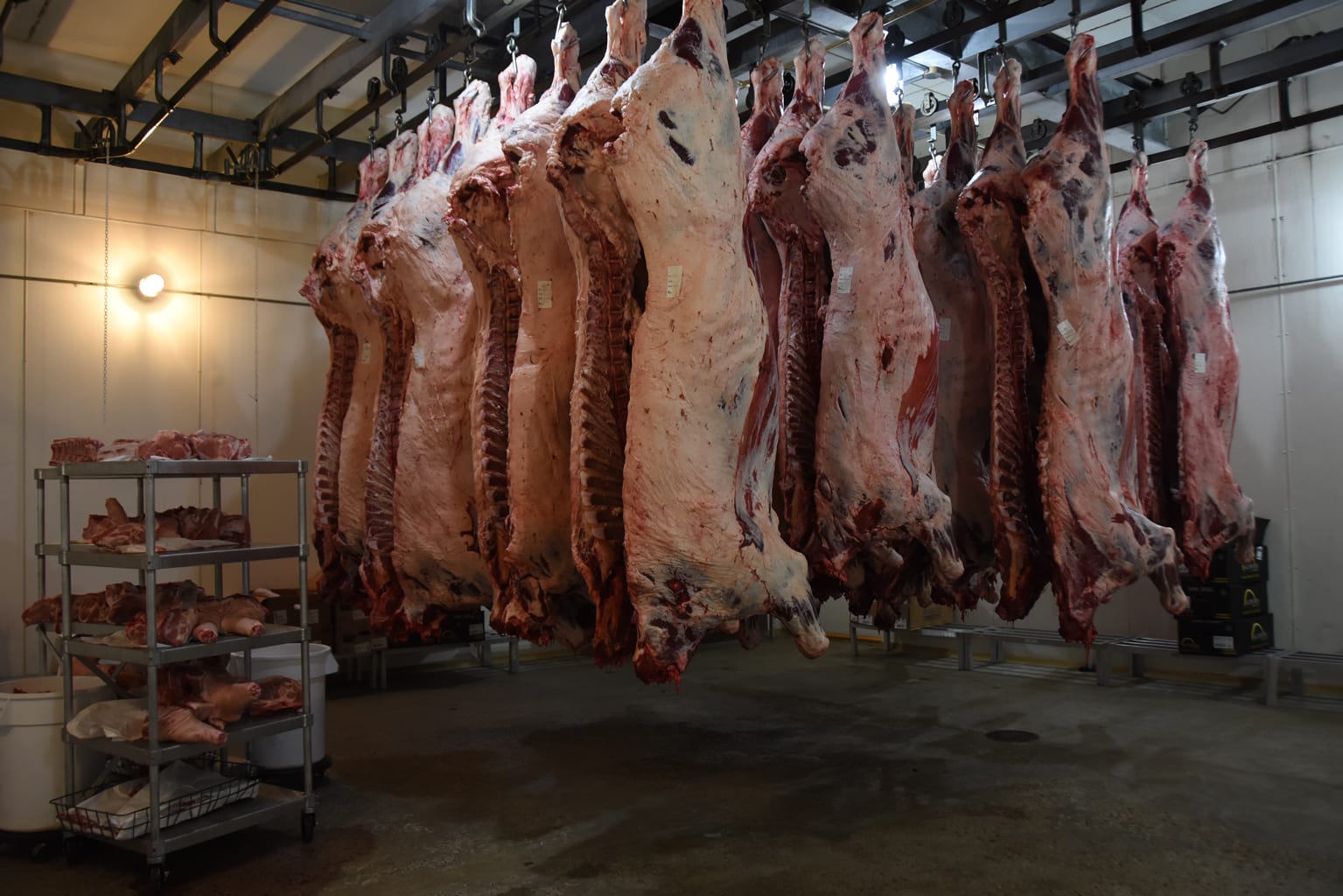Bagley Farms Meat Market Edwardsville IL: Your Go-To Location for Local Meat Option
Bagley Farms Meat Market Edwardsville IL: Your Go-To Location for Local Meat Option
Blog Article
Discover the Art of the Butcher's Cut in a Modern Meat Market
In the ever-evolving landscape of modern-day meat markets, the butcher's cut has actually transcended its standard roots, merging olden craftsmanship with contemporary techniques. bagley farms meat market edwardsville il. Today's butchers are not just processors of meat; they are well-informed artisans that highlight sustainability and honest sourcing. Their know-how in picking and preparing cuts tailored to details cooking requirements provides an exceptional dining experience. Yet, what truly establishes the contemporary butcher apart is their ability to create a deeper link between customers and the origins of their meat. Just how do these masters balance practice with advancement, and what implications does this have for the future of meat intake?
Development of Butchery Techniques

The mid-20th century saw butchery methods even more refined by clinical understandings into muscle biology and meat aging, enhancing both inflammation and preference. Advancements like vacuum packaging and refrigeration expanded item shelf-life, allowing butchers to expand offerings and boost quality assurance. This period also noted the increase of specialized tools, such as band saws and meat slicers, which boosted precision and efficiency in meat handling.
Digital systems now aid in monitoring pet provenance and optimizing cuts to satisfy certain client choices. Additionally, a revival in artisanal butchery has actually emerged, mixing conventional abilities with modern-day expertise to provide to customers looking for ethical and sustainable meat alternatives.

Recognizing Meat Cuts

Recognizing the intricacies of meat cuts is necessary for both butchers and customers seeking high quality and worth. Each cut originates from a different part of the pet, giving one-of-a-kind flavors, appearances, and food preparation approaches. Mastery of these distinctions not only enhances cooking experiences however likewise optimizes the energy of each carcass. For butchers, specific cuts mirror ability and regard for the craft, making certain very little waste and ideal return.
The main classifications of meat cuts consist of primitive, sub-primal, and retail cuts. Primal cuts, such as the loin, rib, and chuck, are the huge areas initially divided from the carcass. Butchers after that damage these down even more into sub-primal cuts, prior to ultimately creating retail cuts available to consumers, like ribeye or tenderloin. Each phase calls for cautious attention to anatomical framework and muscle make-up.
Recognizing muscle mass structure is vital; muscular tissues utilized much more often by the animal tend to be harder and are best suited for sluggish food preparation methods, while less-used muscle mass, like those found in the loin, are extra tender and suitable for grilling or roasting. Familiarity with these differences encourages consumers to make enlightened selections, improving their cooking undertakings.
Selecting Top Quality Meat
Picking the ideal meat entails more than simply picking an aesthetically attractive item from the display screen. The art of choosing high quality meat needs a critical eye and knowledge of particular attributes that signify quality and quality.
Secondly, think about the marbling, which describes the white flecks of fat within the muscle. Correct marbling is a crucial indicator of inflammation and taste, as it thaws during food preparation, enhancing the meat's juiciness. Keep in mind, higher marbling commonly associates with premium high quality cuts, such as USDA Prime.
Texture is one more important aspect; meat ought to feel solid to the touch, not slimy or overly soft. Additionally, bear in mind the fragrance. Fresh meat needs to have a clean, neutral scent, without any sour or repulsive smells.
Matching Cuts With Food Preparation Methods
Effectively coupling cuts of meat with the suitable food preparation methods is essential for accomplishing optimum flavor and structure. Different cuts vary in inflammation, marbling, and connective tissue content, each needing details strategies to unlock their potential. Tender cuts like filet mignon and ribeye, with their fundamental marbling, benefit from high-heat, quick-cooking techniques such as grilling or pan-searing. These techniques boost the meat's all-natural flavors and make certain a juicy surface.
On the other hand, tougher cuts like brisket and chuck roast are abundant in collagen, which damages down right into jelly when prepared slowly. These cuts are suitable for braising or sluggish roasting, allowing the meat to soften in time and establish deep, intricate flavors. Cuts such as you could look here brief ribs and pork shoulder make out well with slow-cooking approaches, where extended cooking times transform their durable structures into delicious dishes.
Lamb shanks and oxtail, which call for prolonged food preparation to soften, are best candidates for stewing or sluggish simmering. These approaches coax out rich, hearty tastes while preserving dampness. By understanding the special attributes of each cut, cooks and home chefs alike can raise their culinary creations, making sure each meal is both satisfying and unforgettable.
The Butcher's Function Today
Navigating the evolving landscape of the modern-day meat market, the butcher's function today expands past mere prep work of cuts. Contemporary butchers are culinary craftsmens, educators, and supporters More hints for sustainable techniques. They connect the gap in between the farm and the fork by making certain moral sourcing, understanding pet husbandry, and focusing on openness in the supply chain. This shift mirrors the growing consumer need for high quality over amount, where provenance and pet welfare are critical.
In enhancement to crafting precise cuts, butchers now involve directly with clients, supplying cooking advice and tailoring options to match private demands and choices. Their experience in meat aging, marbling, and taste accounts encourages consumers to make educated decisions, enhancing their cooking experiences. This tailored service exhibits the butcher's evolving role as a relied on advisor in the kitchen area.
Additionally, butchers are essential in decreasing waste, making use of whole pets to produce diverse products such as sausages and stocks - bagley farms meat market edwardsville il. This extensive technique not only respects the animal but likewise aligns with modern sustainability objectives. In this method, the modern butcher symbolizes both tradition and development, adjusting to an ever-changing market while maintaining the artistry and stability of their craft

Final Thought
The modern butcher's craft elaborately weaves traditional methods with modern-day technologies, emphasizing lasting methods and moral sourcing. Mastery in recognizing diverse meat cuts and top quality indications empowers butchers to provide educated referrals, lining up details cuts with optimal food preparation techniques. This proficiency not only raises cooking experiences but also enhances the connection between customers and the beginnings of their food. By recognizing historical techniques while accepting modern needs, important source the butcher's duty continues to be crucial in today's advanced meat market.
Report this page